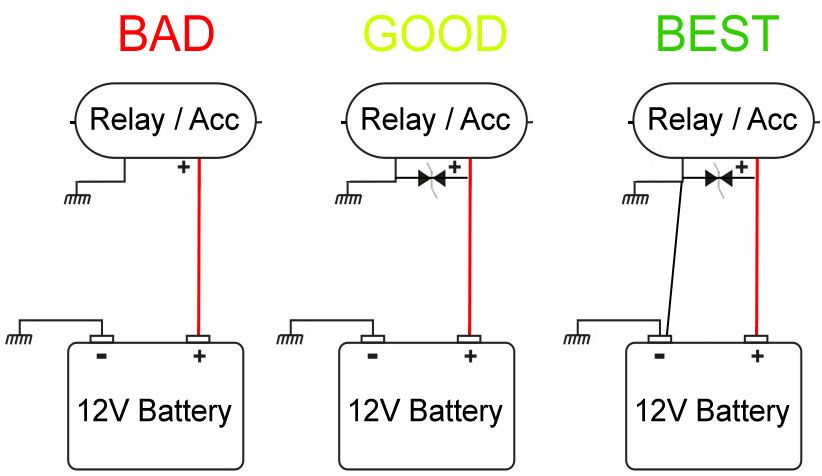


Why do you need spike protection ?
When you buy a new vehicle it has been designed with a balanced and tested electrical circuit, when you add accessories to that circuit you can cause unwanted voltage variations as the accessories switch on and off. Booster / jump start cables are now days fitted with spike protection to prevent voltage spikes when jump starting one car from another, this is to protect the ECU, instrumentation and other sensitive electronics from being damaged.
Many aftermarket accessories have relays, coils, electric motors and solenoids, these are all activated by a magnetic field and copper coils. When these accessories are switched OFF the collapsing magnetic field is instantly converted back into electrical energy. This energy (spike) enters the vehicles electrical circuit and can reach voltages as high as 400V for a fraction of a second, this may be all it takes to damage a ECU or other vital electronic component.
Even a simple electrical circuit on a caravan is unprotected from relays and pumps, these too can cause a spike that can damage a computer, TV, radio or LED lighting fitted to the caravan when the magnetic fields collapse on switch off of these appliances.
Fitting a transient voltage suppressor to the accessory will prevent spikes entering the circuit. You can also prevent spikes by using proper rated cables and wiring all accessories back to the battery but this is not always possible. Fitting a transient voltage suppressor to the battery also helps but is not a perfect solution to spike protection.
What is a Silicon Transient Voltage Suppressor and how does it work ?
Silicon transient voltage suppressors (TVSs) are clamping devices that limit voltage spikes by low impedance avalanche breakdown of a rugged silicon pn junction. They are used to protect sensitive components from electrical overstress such as that caused by induced lightning, inductive load switching and electrostatic discharge.
When a transient appears the TVS becomes active, clamping it to a harmless level. Its electrical parameters such as breakdown voltage (V(BR)), leakage current (ID), and capacitance should be "invisible" to the circuit and have no effect on performance.
The reverse standoff voltage (VWM), which approximates the circuit operating voltage is normally 10% below breakdown voltage. This assures minimal standby leakage current and compensates for voltage excursions caused by temperature variations. The TVS clamps instantly when transients occur, limiting the spike voltage to a safe level while diverting damaging currents away from the protected part. These functions are illustrated below.





